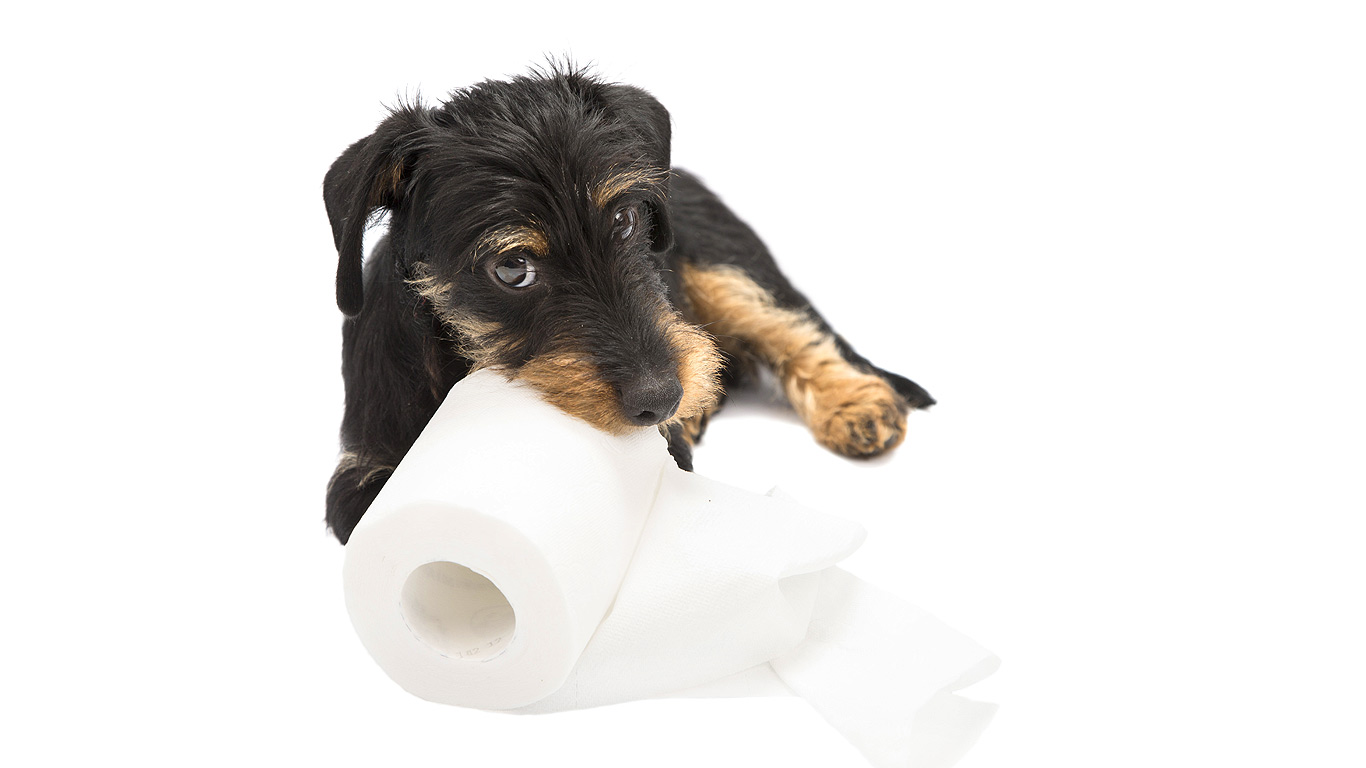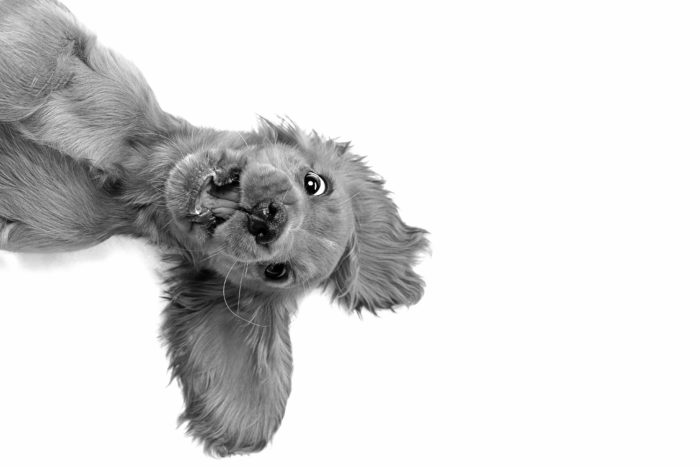
Tips for Safe Spot and Bathroom Training
Revised January 2025
Safe spot (a place for naps, resting, and preventing unwanted behavior) and bathroom training go hand in hand.
A word on crates: No rule says you must crate-train your puppy. Everyone has different schedules and setups. If you decide to use a crate you must teach your puppy to be comfortable inside. Working with a certified pro is a good step toward achieving a good crate training plan.
The first thing most new puppy parents face is teaching the pup where to go to pee and poo. Yes, there is some sleep deprivation and countless trips outside, but teaching your puppy this habit should not be complicated. It does however require that you have a good plan and realistic goals.
Good Management Helps
A loose puppy needs 100% supervision. When you can’t supervise a safe spot to contain your pup is helpful. In addition to bathroom training, safe spots will help promote quality nap time. They provide a quiet respite for a puppy resulting in a calmer more focused pup and it gives you downtime. In addition, it will help prevent your puppy from developing inappropriate chewing preferences,
A loose pup with no supervision can wreak havoc on your life. They will chew, poo, bite, destroy, and maybe make you cry. I get calls all the time from stressed-out puppy parents. The household has been disrupted and a feeling of defeat is setting in. Please don’t be discouraged. Success is around the corner.
The key to proper safe spot training is that your pup learns to be comfortable sequestered, not only when you are sleeping or away but when you are at home and moving around the house. If you only sequester the pup when you are leaving (or sleeping), they will come to associate the safe spot with you disappearing. If you are struggling with teaching your puppy to be comfortable sequestered in a crate or behind a gate reach out to a certified pro for help.
The Slippery Slope of Safe Spot Guilt
A half-hearted approach to confinement training may result in more resistance and unnecessary stress that can be avoided if you stick to a game plan. Here are some tips to help create a positive association with a crate (pen, etc).
Sidebar: You are better off not using a crate if you are not up to taking the time and effort required to teach your pup to be comfortable in it. You will do more harm than good with a shaky training plan here.
Play Games
Play games multiple times per day that help make the crate (or exercise pen) more attractive to the puppy.
Toss The Treat
- Set a timer for 10 minutes.
- Toss a treat in the crate and say ‘go in‘.
- Ask the puppy to ‘come out’.
- Repeat.
- Do this until your timer goes off.
Jackpot
- Hide a jackpot such as a raw frozen bone or a delicious stuffed toy in the back of the crate.
- Toss a treat in.
- When the pup finds the jackpot let him gnaw at it for the count of 10.
- Gently bring him out and close the door to the crate preventing him access to the jackpot..
- Count to 10 again.
- Open the door and allow access.
- Repeat.
Bathroom Training Plan
Create a plan for bathroom training your puppy. Your success depends on you and your actions, not the puppy.
The simple version goes like this; the puppy has every opportunity to ‘go’ outside and no opportunity to ‘go’ inside. You reinforce the behavior you want with a tiny tasty treat and a bit of free time. You stay the course. The pup’s bathroom habits will start to become reliable after about 3 to 4 months of your continued good work. This is a ballpark figure based on how long it takes for the good habit to form.
People and puppies need not go through unnecessary turmoil and strife when it comes to confinement and bathroom training. With consistency and attention to the process, you and your puppy will quickly fall into a rhythm. Soon you will be sleeping through the night again. Plus you’ll have taught your pup excellent chill-out skills and bathroom habits! Yahoo!
Tip List to Help You Devise and Stick To A Plan
- Make a plan and stick to the plan.
- Confinement of some sort is helpful.
- Go outside or to the spot of your choice, on a leash or long line.
- Stand relatively still.
- Use a ‘key phrase, such as ‘show me’ or ‘go pee’.
- Stay outside for approximately 3 – 5 minutes.
- Reward the puppy for ‘going’ with food and a bit of free time.
- If they don’t ‘go’, pop them in the safe spot (crate, pen, gated area) to avoid an accident.
- Offer another opportunity a short time later
- Remember it will take 3-4 months for a habit to form.
- Sleep interruption is a real thing. Expect to get up in the middle of the night to take your puppy outside for the first few weeks.
- Go outside with the pup each time they come out of the safe spot.
- Go outside with the pup before they go back to the safe spot.
- If it feels like you are going outside all the time, you are doing it right.
- Use an enzymatic cleaner inside the house to clean up accidents.

